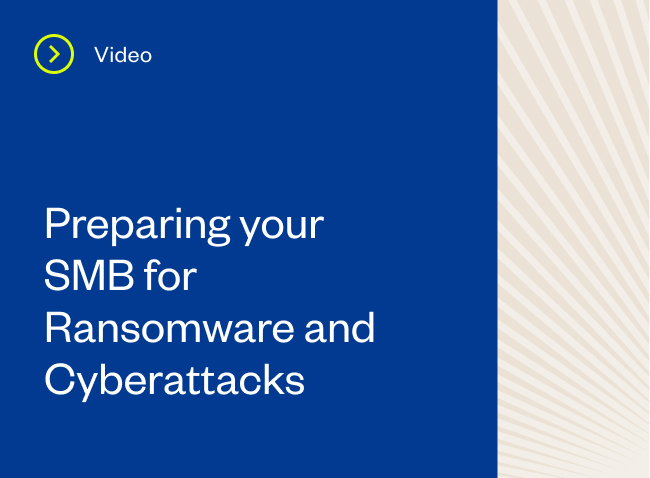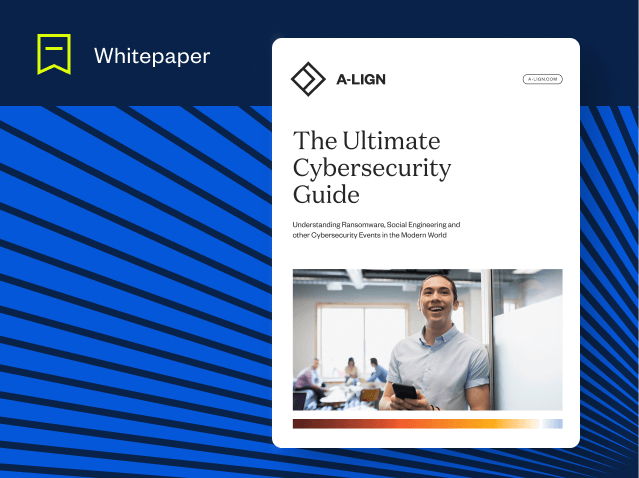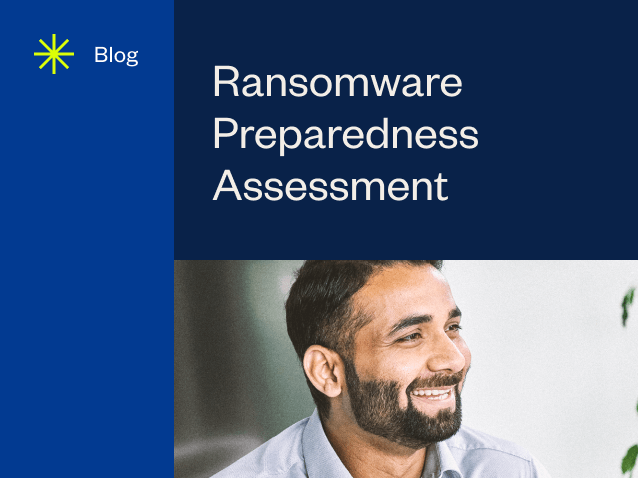Ransomware preparedness assessment
Are you prepared for a ransomware attack or major cybersecurity event?
Ransomware attacks are more prevalent than ever, with bad actors demanding large sums of monetary compensation to release their hold on organizations and their data.
A-LIGN offers a comprehensive review of your infrastructure and processes with our ransomware preparedness assessment service. With a unique three-phased approach that includes both assessments and real-world simulations, A-LIGN will identify any gaps in your organization’s cybersecurity posture and help your team prepare for any future events.

Are you prepared?
Know where you stand with a ransomware preparedness assessment
A-LIGN’s ransomware preparedness assessment service is a unique program that reviews the risk, security preparedness, and existing controls utilizing the NIST Cybersecurity framework.
In addition, we review the technical security capabilities of your organization with penetration testing and social engineering. Our team will validate that you are well prepared to respond to cybersecurity threats with a review of your existing business continuity and disaster recovery plan and real-world simulations.
A-LIGN’s approach of “Identify”, “Test”, and “Prepare” examines all the dimensions of cybersecurity threats, while other offerings focus on only one or two areas.
The benefits of a ransomware preparedness assessment:
- Identifies any gaps in your organization’s cybersecurity plan, based on the NIST CSF, and helps your team prepare for possible future cybersecurity events
- Uncovers cybersecurity vulnerabilities through penetration testing and social engineering
- Ensures your organization knows how to respond if an attack occurs
- Delivers peace of mind for your customers knowing that your organization is prepared and can defend against cybersecurity events
Ransomware preparedness assessment services
Identify
A-LIGN will conduct key asset and risk profile identification with a security capabilities maturity review based on the NIST CSF.
Test
A-LIGN will test your organization’s readiness for a cybersecurity threat with penetration testing and social engineering using real-world attack simulations.
Prepare
A-LIGN will lead table-top simulations to close any gaps in your ransomware response and preparedness capabilities.
Why A-LIGN

Get started with A-LIGN
Are you ready to start your compliance journey? A-LIGN is ready to assist with any of your compliance, cybersecurity, and privacy needs.







